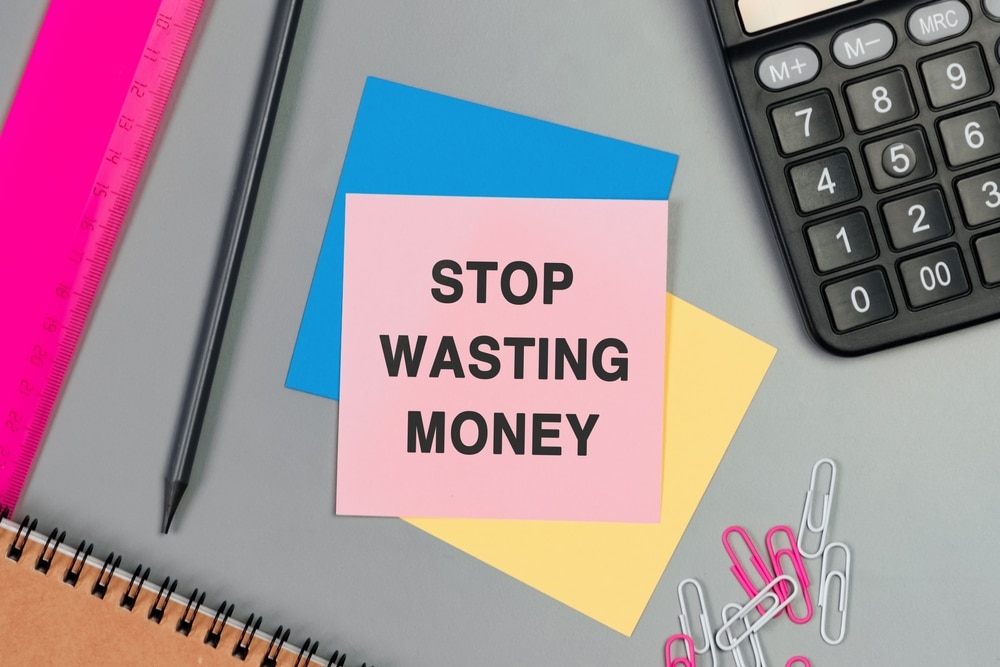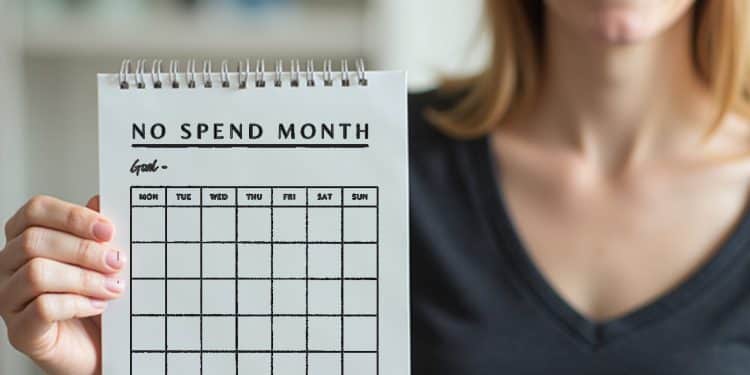Do you ever look at your bank account and wonder, Where did all my money go? If so, you’re not alone. With impulse purchases, subscription services, and convenience spending, it’s easy to lose track of where your money goes. That’s where the no-spend challenge comes in.
The no-spend challenge is a short-term financial reset that helps you break bad spending habits, become more mindful about money, and save a significant amount in a short period. Whether you’re looking to cut back on unnecessary expenses, build better financial discipline, or just see how much you can save, this challenge can be a game-changer.
But does it actually work? Can avoiding unnecessary purchases for a set period really reset your spending habits? Let’s dive into what the no-spend challenge is, how to do it successfully, and what long-term benefits you can expect.
What is a No-Spend Challenge?
A no-spend challenge is exactly what it sounds like: a set period where you commit to not spending money on anything non-essential. This means no takeout, no shopping sprees, no impulse buys—just sticking to absolute necessities.
The Rules of a No-Spend Challenge
- Define Your Timeframe – Common options include a week, a month, or even longer. The most popular version is a 30-day no-spend challenge.
- Identify Essential vs. Non-Essential Spending – Essentials include rent, utilities, groceries, gas, and necessary medications. Non-essentials include dining out, clothing, entertainment, and impulse purchases.
- Set Clear Exceptions – If you have pre-planned events or necessary expenses, outline them beforehand so you don’t feel guilty for breaking the challenge.
- Track Your Progress – Keep a journal or use a budgeting app to log what you would have spent and how much you’re saving instead.
- Find Free Alternatives – Instead of spending money on fun, explore free activities like hiking, reading, or at-home game nights.
By setting clear rules, you make the challenge realistic and achievable, ensuring you actually complete it without feeling deprived.

Why Should You Try a No-Spend Challenge?
People take on a no-spend challenge for different reasons, but the benefits go beyond just saving money. Here’s what you can expect to gain:
1. Awareness of Your Spending Triggers
Most of us spend money out of habit, boredom, or social pressure. A no-spend challenge forces you to identify why you’re spending and how often you make unnecessary purchases.
For example, do you buy coffee out of convenience or because it’s a daily ritual? Do you shop online to relieve stress? Identifying these triggers helps you adjust your spending habits long-term.
2. A Healthier Relationship with Money
By taking a break from unnecessary spending, you shift your mindset from instant gratification to intentional financial choices. This leads to better budgeting, smarter purchases, and overall financial mindfulness.
3. A Boost in Savings
One of the biggest benefits of a no-spend challenge is how much money you can instantly save. Cutting out unnecessary expenses for just 30 days can free up hundreds or even thousands of dollars.
For example, if you normally spend:
- $5/day on coffee → $150/month saved
- $200/month on dining out → saved
- $50/month on impulse online shopping → saved
That’s $400+ saved in one month—without earning any extra income.
4. Less Clutter, More Appreciation
With less shopping, you buy fewer things you don’t actually need. This leads to less clutter in your home and more appreciation for what you already own. Many people realize they don’t need as much as they thought, making future spending more intentional.
5. A Mental Reset
Financial stress can take a toll on your well-being. A no-spend challenge gives you a sense of control over your money, reducing anxiety and helping you focus on financial goals rather than paycheck-to-paycheck survival.
How to Make a No-Spend Challenge Successful
1. Set a Clear Goal
Before starting, ask yourself:
- Why am I doing this challenge? To save for a trip? Pay off debt? Just to see if I can?
- What will I do with the money I save? Having a purpose makes it easier to stay motivated.
2. Prepare for Temptations
You’ll be tempted to spend—especially if you’re used to regular shopping, eating out, or spontaneous purchases. To stay on track:
✔ Avoid unnecessary store visits—no browsing “just to look.”
✔ Unsubscribe from shopping emails and sales alerts.
✔ Tell friends and family so they don’t tempt you with dinner invites.
3. Find Free or Low-Cost Alternatives
Instead of spending, get creative:
- Entertainment: Watch free movies, read books you already own, or explore free events in your city.
- Dining: Cook new recipes at home instead of eating out.
- Socializing: Have friends over for a game night instead of going out.
Social media accounts like @FrugalLivingTips on TikTok share daily inspiration on free activities that make saving fun, not frustrating.
4. Track Your Wins
Keep a running total of how much you’re NOT spending. Seeing these numbers grow is incredibly motivating.
Try keeping a daily or weekly log with:
✔ Money you would have spent (e.g., “Skipped takeout: saved $25”).
✔ Any reflections on how you feel about not spending.
✔ New habits you’re forming, like meal prepping or DIY solutions.
Seeing progress in real numbers reinforces your motivation.

What Happens After the No-Spend Challenge?
A no-spend challenge isn’t just about saving money for a month—it’s about resetting your mindset for the long run. Here’s how to transition after completing the challenge:
1. Reintroduce Spending Intentionally
Now that you’ve gone a set period without impulse buying, ease back into spending more mindfully. Ask yourself before every purchase:
- Do I actually need this?
- Can I wait a few days before deciding?
- Is there a free or lower-cost alternative?
2. Keep Your Savings Habit Going
Instead of going back to old habits, channel the money you saved into something productive:
✔ Start or grow your emergency fund.
✔ Pay off debt faster.
✔ Save for something meaningful, like travel or investing.
3. Consider Making No-Spend Days a Regular Habit
Many people love the no-spend challenge so much that they continue with weekly or monthly no-spend days. For example:
- No-Spend Mondays (no coffee runs or impulse buys).
- One week per month with zero non-essential spending.
- Seasonal no-spend challenges to realign finances.
Making these small adjustments throughout the year keeps you on track financially without feeling restricted.
Is It Worth It?
If you’ve ever felt stuck in a cycle of overspending, impulse shopping, or just wondering where your money went, the no-spend challenge is a great way to reset your financial habits.
By taking a break from unnecessary spending, you:
✔ Gain awareness of your money habits.
✔ Build a stronger mindset around saving.
✔ See real financial progress in just a few weeks.
You don’t have to go extreme—just start with a time frame that feels achievable and see what happens. Who knows? A simple no-spend challenge might be the financial reset you’ve been looking for.
